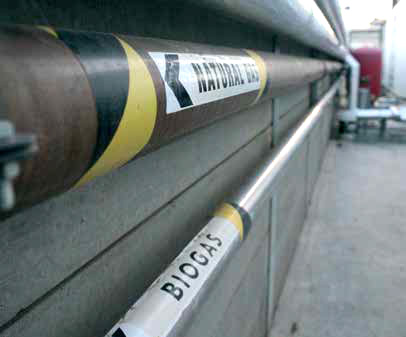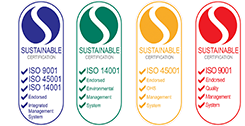Tongala Cogeneration system
HW Greenham Tongala, Victoria
BACKGROUND
Simons Green Energy were engaged to provide an in-depth feasibility study to assess the suitability of Greenham installing a mixed fuel cogeneration System on their site in Tongala. The system needed to make good financial sense as well as offer environmental benefits.
Simons were subsequently appointed the project and provided the client an end-to-end solution from initial design to project completion.
Simons provided:
- Design and specifications
- Project Management including quoting and ordering
- Regulatory Approvals – Liaising and approvals which is a time consuming and difficult task
- Installation on site – project managing any external contractors on site
- Commissioning and trouble shooting
- Monitoring of equipment
- Preventative maintenance and breakdowns
Simons partnered with Siemens to provide the two cogeneration units that are installed on site. The cogeneration units operate 24 hrs/day 5 days a week and the installed cogeneration and biogas system is fully automated with remote monitoring by a customed designed PLC control system. The controls system monitors all the conditions of the site including both cogeneration units, the pumps, the pressures and temperatures of all relevant systems including biogas CAL pressures and flare.
The system utilises two SGE-42HM 1000kW Siemens cogeneration units set to deliver power and heat to the abattoir. SGE covered three of the existing anaerobic lagoons to capture the methane that was naturally being generated in the ponds. The treated methane as well at natural gas power the engines creating electricity and heat.
Simons Green Energy had several key missions
- Provide the customer with a positive financial outcome
- Reduce the operating carbon emissions for Greenham Tongala
- Ensure to engage and provide work to as many local trades as possible in order to contribute to the local economy.


Project Name: HW Greenham & Sons Pty Ltd – Tongala, Victoria
System designed, supplied, installed and maintained by: Simons Green Energy
Completion Date: December 2019
System Details:
- One Siemens SGE-42HM 1MW Natural gas and Biogas cogeneration system
- One Siemens SGE-42HM 1MW Natural gas cogeneration system
- Covered anaerobic Lagoon with heating
- Biogas treatment and blower system
- Biogas flare
- SGE-Vision control system
KEY FACTS
Fuel Source: Combination of natural gas and biogas
Estimated Carbon reduction per year: 14,000 Tonnes per year. This is equivalent to taking over 3,000 cars off the road per year.
Estimated Payback: 3.5 years (including VEEC certificates & grants)

SGE-Vision remote SCADA Overview page for the system – control from a distance
DELIVERING RESULTS
The Cogeneration systems have a maximum electrical output of 2000kW and 1900kW of heat.
The biogas system have a predicted maximum biogas generation of approximately 80m3/hr, and will provide a portion of the gas required for the generation.
The system is predicted to reduce emissions of the plant, its electricity and heat generation, and waste management by approximately 14,000 Tonnes per year. This is equivalent to taking over 3,000 cars off the road per year. The system also has a very positive financial benefit, it is set to pay itself back in approximately 3.5 years.
SYSTEM APPLICATION
The two generators will service the base electrical load for the Tongala site which is approximately 1,800kW in the daytime between two switchboards. The generators are electrically led which means that they vary their output in order to match the grid requirements of the facility. The generators are programmed to run 24 hours per day, 5 days per week, as these times are the operational shifts of the abattoir.
The waste heat produced by the engine is used to heat water from about 85 degrees to about 95 degrees. This 95 degree water is then used to preheat wash-down and process water, via a series of plate heat exchanges on site. This preheated water reduces the thermal load on the hot water heaters onsite. The calculated heat requirement for the facilities heating water requirements (based on previous gas bills) is approximately 1300kW. The excess average thermal energy from the cogeneration units is used for heating the anaerobic digesters.
EQUIPMENT INSTALLED
- One Siemens SGE-42HM 1MW Natural gas and Biogas cogeneration system in a Container with top mounted exhaust gas recovery.
- One Siemens SGE-42HM 1MW Natural gas cogeneration system in a Container with top mounted exhaust gas recovery.
- A new system electrical cogeneration sub- board
- Civil and slab works for the new systems
- Heat recovery system to extract thermal energy from the two machines
- Heating interface heat exchangers for the existing Raypak heaters
- Interconnecting pipework and valving
- Wiring, controls, sensors
- Touch screen SCADA system with remote off-site monitoring and management
- Covered Anaerobic Lagoon with integrated heating system
- Civil works to cover existing anaerobic digesters
- Gas collection pipe from the digesters
- Civil works for biogas equipment
- Biogas chiller skid, biogas pump and flare
- Pumps and heat exchanger for digester heating
- Interconnecting pipework and valving
- Wiring & sensors including Biogas Analyser and Pumps control system


WHAT IS COGENERATION/ WHAT IS FUEL BLENDING COGENERATION
Cogeneration also known as Combined Heat and Power (CHP) is the simultaneous production of two forms of energy – electricity and heat – from a single fuel source.
Cogeneration generally uses a natural gas powered engine to generate electricity on site and convers the waste heat from the engine into usable hear for process heat for manufacturing, heating of water for industrial processes and other similar applications. Onsite Cogeneration systems generally have a total efficiency of up to 85%, as compared to the 30% efficiency of coal fired grid supplied electricity. On site electricity generated by a Cogeneration system is cleaner and cheaper than coal fired grid supplied electricity. It therefore provides a substantial cost savings.
When cogeneration systems are powered by biogas, there are additional benefits. This is because the gas to power the system is now renewable, has 24 times lower equivalent emissions than if the biogas were released to the atmosphere, and the energy generated is more profitable to the site owner as renewable energy certificates are created in the generation of this electricity and heat.
Biogas is relatively high in sulphur (as rotten egg gas or H2S) and hence the gas usually needs to be purified or scrubbed of sulphur. Also, the supply of biogas can be limited at some periods in the day, or isn’t produced in enough quantity to profitably operate a cogeneration system. Fuel Blending is using a mix of natural gas and biogas in the cogeneration unit and combines the benefits of each operational fuel into one package.
BENEFITS OF FUEL BLENDING
By blending fuels:
- The site can ensure the supply of the fuel for generation
- Operate at a higher output that you would have otherwise been able to run at on biogas alone.
- Effectively reduce the sulphur level of the operational fuel by diluting the biogas with Natural gas
- Allow the unit to start on Natural gas, then blend in biogas in gradually which makes starting the machine easier
- Make a biogas cogeneration system more cost effective by allowing a larger generation unit with effectively a lower $/W than a straight biogas system.
- Enable the client to apply for green grants and subsidies than a straight natural gas cogeneration system







